You searched for: warsaw
<< Previous | Displaying results 176-200 of 487 for "warsaw" | Next >>
-
Abraham Lewent
ID CardAbraham was born to a Jewish family in the Polish capital of Warsaw. His grandfather owned a clothing factory and retail store, which his father managed. Abraham's family lived in a Jewish section of Warsaw and he attended a Jewish school. Warsaw's Jewish community was the largest in Europe, and made up nearly one-third of the population of the city. 1933-39: After the bombardment of Warsaw began on September 8, 1939, Abraham's family had little to eat. The stores had been reduced to rubble; they had no…
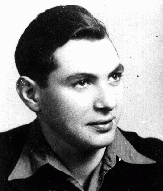
-

-
Fela Perznianko
ID CardFela was the older of two children born to Jewish parents living in Zakroczym, a town on the Vistula River near Warsaw. Her father was a respected attorney. As a young woman, Fela worked as a hat designer in Warsaw, until she married Moshe Galek when she was in her late 20s. She moved to the nearby town of Sochocin, where her husband owned a pearl-button factory. Fela and Moshe raised four daughters. 1933-39: In 1936 the Galeks moved to Warsaw, attracted by the city's cultural life. When Germany invaded…

-
Rachela Rottenberg
ID CardThe younger of two children born to Jewish parents, Rachela grew up in Radom, an industrial town located some 60 miles south of Warsaw. One-quarter of the city's 100,000 prewar population was Jewish. Rachela's father was a Zionist and was active in municipal affairs. Her mother did volunteer work. l933-39: Germany invaded Poland on September 1, 1939. On September 5, with the Germans rapidly advancing, Rachela's family sought temporary safety with relatives in Warsaw. They got separated along the way.…

-
Shmuel David Bursztyn
ID CardRaised by Yiddish-speaking, religious Jewish parents in the town of Pultusk in central Poland, Shmuel married in the late 1890s and moved with his wife, Gisha, to the city of Warsaw. Shmuel owned and operated a bakery on Zamenhofa Street. In 1920 the Bursztyns and their eight children moved to larger quarters in a two-bedroom apartment at 47 Mila Street in the Jewish section of the city. 1933-39: By 1939 six of Shmuel's children were grown and on their own. Only his youngest son and daughter still lived…
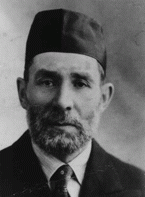
-
Odon Jerzy Wos
ID CardOdon was the third of four children born to Roman Catholic parents in Warsaw, Poland's capital. His father had worked for the Polish merchant marine before starting his own textile business in 1930. When Odon was 8, the family moved to a comfortable apartment located near the Royal Castle and Vistula River. In 1932 Odon began attending grade school. 1933-39: In September 1938 Odon began secondary school. Sensing growing danger from Germany, his father advised him to study German in addition to French. On…

-
Mieczyslaw (Marek) Madejski
ID CardMieczyslaw was the eldest of three sons born to well-to-do Roman Catholic parents in Poland's capital of Warsaw. His father was a real estate developer and his mother was a housewife. Mieczyslaw, or Mieteck as he was nicknamed, began attending public elementary school in 1930 when he was 7 years old. 1933-39: Mieczyslaw's father urged him to study either German or Russian because he thought it was likely that there would be a German or Soviet invasion. Germany invaded Poland on September 1, 1939. During…
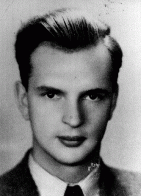
-
Germans search Jews for weapons
PhotoGerman personnel on Grzybowska Street arrest and search Jewish men who supposedly hid weapons prior to the German occupation of Warsaw. Warsaw, Poland, October-December 1939. This is one of a series of photos taken by Arthur Grimm, an SS propaganda company photographer, documenting the investigative work of the Sicherheitsdienst (SD) in occupied Warsaw for the Berliner Illustrierte Zeitung. Although only some of the photos were published, it is likely that the incidents depicted in the BIZ were staged…
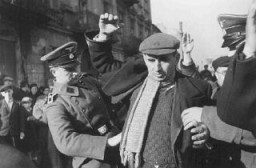
-
Refugee's notebook
ArtifactNotebook of Josef Fiszman, a refugee writer from Warsaw. He sold articles to Jewish newspapers in Shanghai and Harbin but still needed help to live from the American Jewish Joint Distribution Committee. Writing in Yiddish, Fiszman rotated the notebook in order to write from right to left (the words "Note book" thus appear to be upside down in this image). [From the USHMM special exhibition Flight and Rescue.]
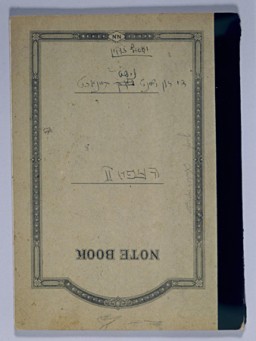
-
Pants belonging to Marjan Glass
ArtifactPants worn by Marjan Glass as he dug anti-tank ditches for the defense of Warsaw, Poland, and then as he hastily fled the city ahead of the German advance on September 7, 1939. Glass, a lawyer, escaped with his wife and three-year-old son, and his wife's mother and brother. He left without taking the time to change from his soiled work clothing. [From the USHMM special exhibition Flight and Rescue.]

-
Female Soldiers of the Polish Home Army
PhotoSoldiers of the Polish Home Army Women's Auxiliary Services, taken captive by the Germans in October 1944 as a result of the Warsaw Polish uprising. After the uprising ended on October 2, the Germans took as prisoners of war more than 11,000 soldiers of the Polish Home Army.

-
Janusz Korczak poses with children and staff in his orphanage
PhotoJanusz Korczak (center) and Sabina Lejzerowicz (to his right) pose with children and younger staff in Korczak's orphanage in Warsaw, circa 1930-1939. Even as they were deported to their deaths at Treblinka in 1942, Korczak and his staff stayed by their children.
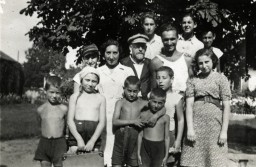
-
Portrait by refugee artist Yonia Fain
ArtifactPortrait of Janek Goldstein, in pencil, by Yonia Fain. Goldstein, a friend of the artist in Shanghai, was the son of Bernard Goldstein, who was active in the Bundist underground of the Warsaw ghetto and participated in the 1943 uprising. [From the USHMM special exhibition Flight and Rescue.]

-
SS and Police Leader Juergen Stroop interrogates two captured Jews
PhotoSS and Police Leader Juergen Stroop interrogates two Jews arrested during the Warsaw ghetto uprising. Poland, April 19-May 16, 1943.
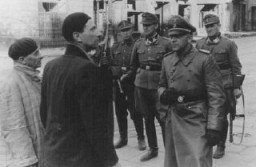
-
Pawel Zenon Wos
ID CardPawel was the oldest of four children born to Roman Catholic parents in Poland's capital of Warsaw. Pawel's father had worked for the Polish merchant marine before starting his own textile business in 1930. The family moved to a comfortable apartment near the Royal Castle and the Vistula River. Pawel excelled in sports, including basketball and tennis. His favorite sport was rowing. 1933-39: In May 1939 Pawel became an army reserve officer and went to training camp near Augustow. On the morning of…

-
Zofia Rapaport
ID CardZofia was born to a Jewish family in Warsaw. Zofia's father, a self-made man who had put himself through university, was a successful banker. The Rapaports lived on a street of single-family homes with gardens. Zofia's room was decorated with yellow lacquered furniture. 1933-39: As a young child, Zofia loved to play with her dog, Chapek. Sometimes she got to go shopping with her mother downtown. Each year during the Jewish holiday of Passover her family visited Zofia's grandparents in Lvov. In late August…
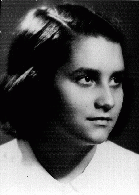
-
Ben Stern
ID CardBen was born to Jewish parents in Warsaw. When Ben was 7, his family moved to Mogielnica, about 40 miles from Warsaw. Ben's father spent much of his time studying religious texts. His wife managed the family liquor store. Ben attended public school during the day and was tutored in religious studies in the evening. 1933-39: After attending school in Warsaw, Ben returned home to help in the family's liquor store. One day, there was a mass demonstration in town. People chanted, "Don't buy from the Jews!"…
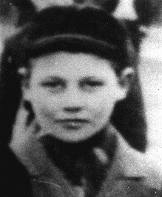
-
Frimit Bursztyn
ID CardFrimit was one of eight children born to Yiddish-speaking, religious Jewish parents. The Bursztyns lived in the heart of the same Jewish neighborhood in Warsaw where Frimit's father owned and operated a bakery located on Zamenhofa Street. In 1920 the Bursztyns moved to a comfortable, two-bedroom apartment in the same neighborhood at 47 Mila Street. Frimit attended Warsaw public schools. 1933-39: By 1939 six of Frimit's brothers and sisters had already moved out. Only Frimit and her younger brother were…
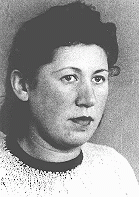
-
Zofia Yamaika
ID CardZofia was raised in a well-to-do, prominent Hasidic Jewish family in Warsaw. Uneasy with the constant tension between the Polish people and the Jewish minority, Zofia joined the communist student club Spartacus when she was a teenager. Spartacus actively campaigned against the growing fascist movement in Europe. 1933-39: When Warsaw surrendered to the Germans on September 28, 1939, Zofia was 14 years old. She stopped going to school. Though the Nazis banned Spartacus, she secretly helped to revive the…
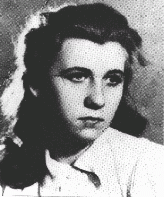
-
Soldiers of the Armia Krajowa
PhotoSoldiers of the Polish Home Army (Armia Krajowa) take cover behind a barricade during the Warsaw Polish uprising. During the uprising, the Home Army was supported by 2,500 soldiers from other resistance movements, such as the National Armed Forces (Narodowe Siły Zbrojne, NSZ) and the communist People's Army (Armia Ludowa, AL). Only a quarter of the partisans had access to weapons, fighting against 25,000 German soldiers equipped with artillery, tanks, and air forces. Two of the three soldiers shown here…

-
Raszka (Roza) Galek
ID CardRoza was born to a Jewish family in a predominately Catholic village near Warsaw. Her father owned a prosperous pearl button factory that employed some 100 people. They shared a large home with Roza's grandmother who ran a general store and bakery in the village. Roza and her three sisters attended Polish schools and took Hebrew lessons at the towns' synagogue. 1933-39: Roza's father frequently did business in Warsaw so the family moved there in 1934. They loved the city, and often went to concerts and…
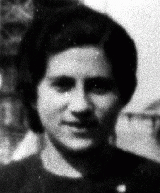
-
Jozef Rapaport
ID CardJozef was raised in a religious Jewish family. When he was a baby, his father died and his mother was left to care for him and his three older sisters. The family was poor, but Jozef was determined to have a good education. He put himself through university in Prague, and then went on to earn a Ph.D. in economics in Vienna. In 1931 he married Leah Kohl, and the couple settled in Warsaw. 1933-39: The Rapaports lived in the suburbs, and Jozef worked as a banker. His daughter, Zofia, was born in 1933. Jozef…
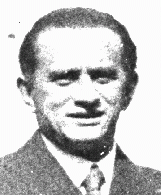
-
Wladyslaw Tadeusz Surmacki
ID CardBorn to Catholic parents, Wladyslaw attended schools in Warsaw and earned a degree in survey engineering in Moscow in 1914. After fighting in World War I, he commanded a horse artillery division in Warsaw, worked for Poland's Military Geographic Institute, and taught topography courses. He started a family in 1925, and after he retired from the army in 1929 he founded a surveying company. 1933-39: When war with Germany became imminent in the summer of 1939, Wladyslaw volunteered to fight but was rejected…
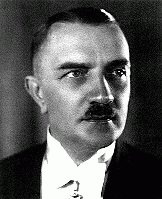
-
Chil Meyer Rajchman
ID CardChil was one of six children born to a Jewish family in the industrial city of Lodz. His mother died before World War II, leaving his father to raise the family. Chil's father could not sustain the family financially, so Chil, as the eldest male child, went to work to help support his brothers and sisters. 1933-39: On September 1, 1939, the Germans invaded Poland. Chil fled Lodz with his younger sister to Pruszkow, a small town 10 miles southwest of Warsaw, where there were fewer restrictions on Jews.…

